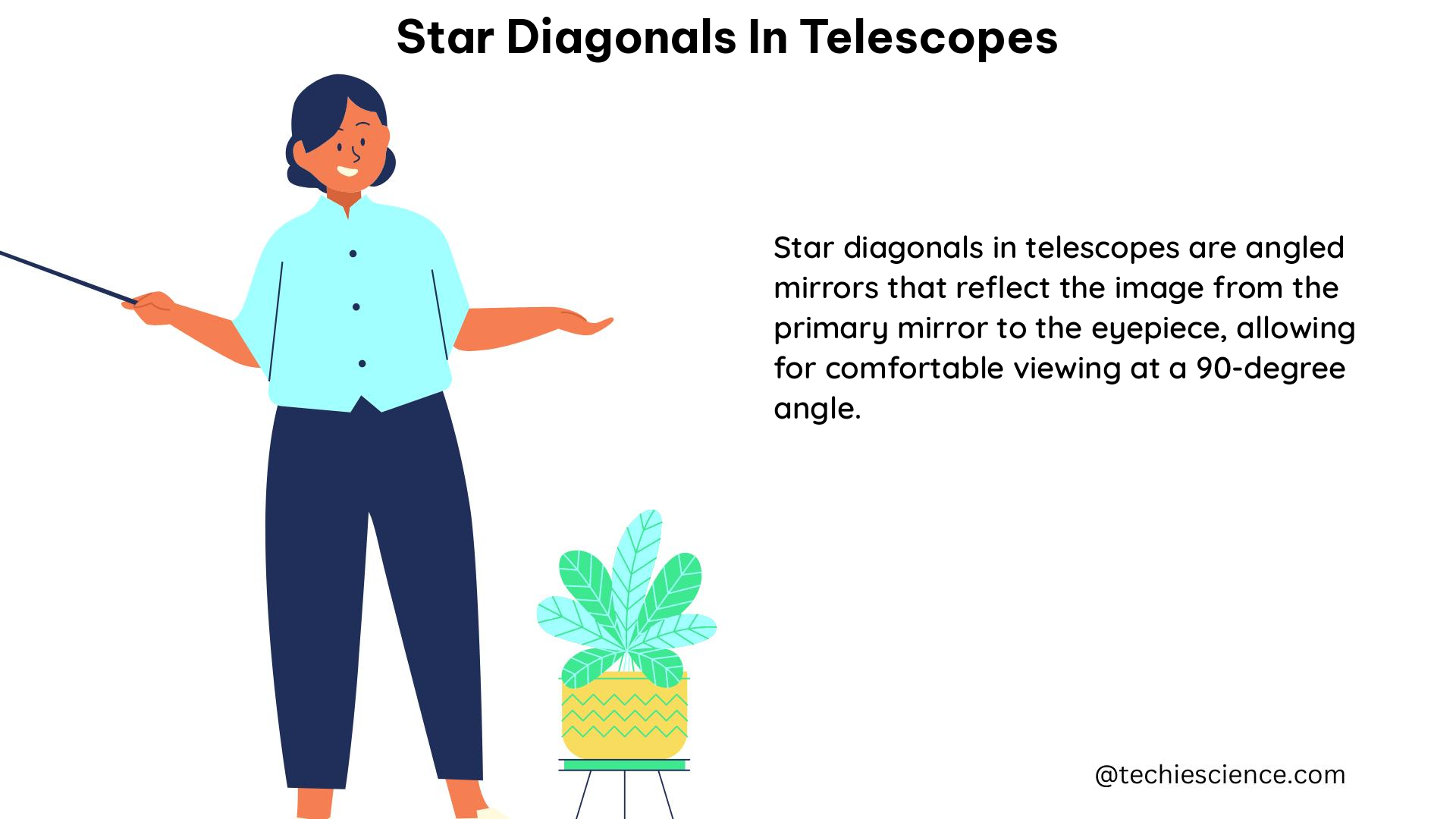Star diagonals are essential accessories for refractors or Schmidt-Cassegrain telescopes, providing a comfortable, upright observing position by bending the light collected by the telescope through 90° before projecting it into the eyepiece. These versatile components come in various technologies, including aluminized (Al) mirror, silvered (Ag) mirror, dielectric mirror, and glass prism, each with its own unique characteristics and performance attributes.
Understanding the Anatomy of Star Diagonals
A star diagonal is composed of several key components, each playing a crucial role in its overall functionality:
-
Diagonal Mirror or Prism: The heart of the star diagonal, this element is responsible for bending the light path by 90 degrees. Depending on the design, it can be a mirror (aluminized, silvered, or dielectric) or a glass prism.
-
Barrel: The cylindrical housing that holds the diagonal mirror or prism, providing a secure and stable mounting point for the eyepiece.
-
Eyepiece Adapter: The threaded end of the barrel that allows the eyepiece to be securely attached to the star diagonal.
-
Baffling: Internal matte-black coatings or structures that minimize stray light and reflections, ensuring a high-contrast image.
-
Mechanical Construction: The overall build quality, including materials used, tolerances, and precision of the components, which contribute to the diagonal’s durability and performance.
Reflective Coatings: Aluminized, Silvered, and Dielectric

The choice of reflective coating on the diagonal mirror or prism is a crucial factor in determining the overall performance and longevity of the star diagonal.
Aluminized Mirrors
Aluminized mirrors are the most common and cost-effective option, with a typical reflectivity of around 90-92% in the visible spectrum. However, they are susceptible to oxidation and degradation over time, leading to a gradual decrease in reflectivity.
Silvered Mirrors
Silvered mirrors offer a higher reflectivity, typically around 95-97% in the visible spectrum. They are more resistant to oxidation than aluminized mirrors, but still have a finite lifespan and can degrade over time.
Dielectric Mirrors
Dielectric mirrors are the premium choice, offering exceptional reflectivity of up to 99% across a wide range of wavelengths. These coatings are highly durable and maintain their performance throughout the lifetime of the star diagonal.
Evaluating Star Diagonal Performance
When testing a star diagonal, it is essential to examine its performance under various observing conditions, both for bright and faint objects in the sky.
Bright Object Test: The Moon
The Moon, being the brightest object in the night sky, is an excellent test for evaluating the internal baffling of a star diagonal. Look for any signs of stray light reflections or loss of contrast when observing the lunar surface.
Faint Object Test: Star Fields
Observing faint star fields can help assess the quality of the diagonal’s reflective coating. A high-quality dielectric coating will maintain excellent contrast and brightness, allowing you to see more detail in the deep sky.
Mechanical Considerations
The mechanical construction of a star diagonal is equally important as its optical performance. Key factors to consider include:
-
Barrel Threads: Ensure a secure and precise fit between the diagonal and the telescope’s focuser or adapter.
-
Eyepiece Fit: The diagonal should hold the eyepiece firmly in place, without any play or wobble, even with heavier eyepieces.
-
Durability: The overall build quality and materials used should withstand the rigors of regular use and transport.
-
Accessories: Some star diagonals come with additional features, such as internal filter threads or integrated dew shields, which can enhance their functionality.
Practical Examples and Recommendations
To illustrate the performance differences between various star diagonal types, let’s consider a few real-world examples:
William Optics 2-inch Dura Bright Dielectric Carbon Fibre Diagonal
This high-end diagonal is known for its exceptional quality and performance. Its dielectric coating maintains a reflectivity of 99% throughout its lifetime, and the internal baffling effectively eliminates stray light reflections, even when observing the Moon. The carbon fiber construction provides a lightweight and durable solution.
SVBONY 2-inch Dielectric Diagonal
As a more budget-friendly option, the SVBONY dielectric diagonal offers a good balance of performance and value. While its reflectivity may not be quite as high as the William Optics model, it still provides excellent contrast and brightness, making it a suitable choice for many amateur astronomers.
Conclusion
Star diagonals are essential components in refractor and Schmidt-Cassegrain telescopes, playing a crucial role in providing a comfortable observing experience. By understanding the various technologies, coatings, and mechanical considerations, physics students can make informed decisions when selecting the right star diagonal for their telescopes. This comprehensive guide has provided a detailed overview of the key factors to consider, empowering you to optimize your observing setup and enjoy the wonders of the night sky.
References
- Mirror vs. Dielectric vs. Prism Diagonal Comparison
- Upgrading Star Diagonal: Benefits
- Check the Diagonal You Are Using
- SVBONY 2-inch Dielectric Diagonal
- What is a Diagonal Telescope Used For?

The lambdageeks.com Core SME Team is a group of experienced subject matter experts from diverse scientific and technical fields including Physics, Chemistry, Technology,Electronics & Electrical Engineering, Automotive, Mechanical Engineering. Our team collaborates to create high-quality, well-researched articles on a wide range of science and technology topics for the lambdageeks.com website.
All Our Senior SME are having more than 7 Years of experience in the respective fields . They are either Working Industry Professionals or assocaited With different Universities. Refer Our Authors Page to get to know About our Core SMEs.